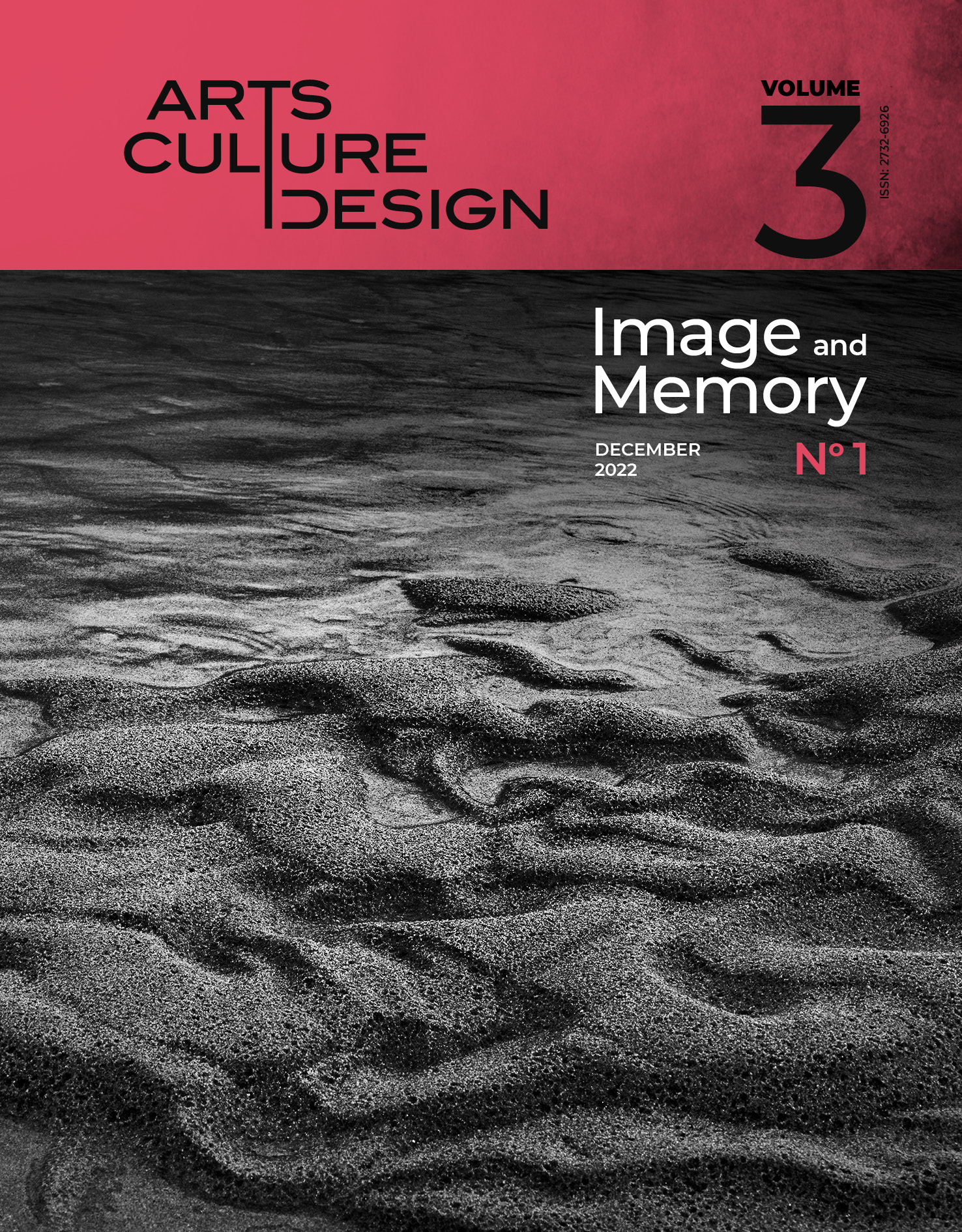PROJECT SPINOZA: RE/MEMBERING SENSORIAL COGENCY - (Part two)

Abstract
The purpose of this article is to present a research portfolio – composed of an online archive and an index from 2020-22 – and perform its outcomes in a memory-theatre. The design needed for this theatre is modelled on Baruch Spinoza’s Ethica, in which the order of a geometrical demonstration hosts a philosophical investigation. The non-same rules/ heteronomy of the host and the guest, in Spinoza’s opus magnum, is an instance of a wider phenomenon which the article seeks to explore and exploit: the docking of an investigation, by the means of a contraption that is foreign to it, intercepting images of what the present may have in store (whether past, present, or future). The sensorial cogency that picks up on elements it can comprehend, but never fully contain: the mnemonic slippery nature of the image. On this backdrop, the article discusses different ways of pairing up with the environment, through media that are hosted rather than belonging there: the different terms of populating the present, being together or forming a group, serve to elucidate certain aspects of memory – mnemonic devices with an environmental footprint – in fieldwork, laboratory research, digital culture or presently the electrosphere. The article thereby seeks to develop and propose some designs to work with the problem of interception – picking up changes in the ‘memory of the present’ (Bergson, 2021): what it holds and what it has in store. The article seeks to establish a parity between apparatuses with such impact, in view of comparing them: whether they are as simple as 1) a post in a hole (a datum), or more complex as 2) a computer docked to a home-office (another datum). In the presentation of the portfolio, a framework for partaking of such changes, compiling the experience prompted by them, is proposed (Benjamin, 1999). The major feature of this framework is then deepened in a situated case-study: here, positions coexisting and valued on different terms, in the presence of a cabin in reconstruction, shift as they are logged in a guest book. In a section on design, the article probes a broader applicability of what has been found in the case-study, based on a wider fieldwork experience. Principle: repair also writes re-pair. In the conclusion, a design for a ‘contemporary interception’ is demonstrated visually. The anthroponomical framework is conceived as a scholarly contribution to art, and an artistic contribution to science, through a mnemonic understanding of the technical image.
Article Details
- How to Cite
-
Barth, T. (2023). PROJECT SPINOZA: RE/MEMBERING SENSORIAL COGENCY - (Part two). Design/Arts/Culture, 3(2), pp. 7–18. https://doi.org/10.12681/dac.33703
- Section
- Articles

This work is licensed under a Creative Commons Attribution-NonCommercial-ShareAlike 4.0 International License.
The copyright for articles in this journal is retained by the author(s), with first publication rights granted to the journal. By virtue of their appearance in this open access journal, articles are free to use (with the exception of the non-granted right to make derivative works) with proper attribution for non-commercial uses (licence Creative Commons 4.0). EKT/NHRF retains the worldwide right to reproduce, display, distribute, and use articles published in DAC in all formats and media, either separately or as part of collective works for the full term of copyright. This includes but is not limited to the right to publish articles in an issue of the Journal, copy and distribute individual reprints of the articles, authorize reproduction of articles in their entirety in another EKT/NHRF publication, and authorize reproduction and distribution of articles or abstracts thereof by means of computerized retrieval systems.
DAC journal considers all submitted artwork on the condition author(s) confirm that third-party intellectual property rights are not violated in any way.
Author(s) are responsible for securing permissions to publish copyrighted material, such as photographs and other artwork and for paying any fees involved. Production of an article will not begin until the editor has received all relevant permissions.
The copyright for published articles in Design | Arts | Culture is retained by the author(s). By virtue of their appearance in this open access journal, articles can be used freely, with proper attribution, for educational and other non-commercial purposes.



